Head restraints

WARNING
Head restraints supplement the other vehicle safety systems. They may provide additional protection against injury in certain rear end collisions. Adjust the head restraints properly, as specified in this section.
Check the adjustment after someone else uses the seat. Do not attach anything to the head restraint stalks or remove the head restraint. Do not use the seat if the head restraint has been removed. If the head restraint was removed, reinstall and properly adjust the head restraint before an occupant uses the seating position. Failure to follow these instructions can reduce the effectiveness of the head restraints. This may increase the risk of serious injury or death in a collision.
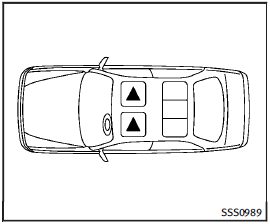
The illustration shows the seating positions equipped with head restraints. The head restraints are adjustable.
 Indicates the seating position is
equipped with a head restraint.
Indicates the seating position is
equipped with a head restraint.
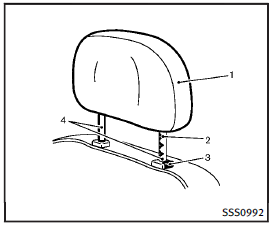
Components
1. Head restraint
2. Adjustment notches
3. Lock knob
4. Stalk
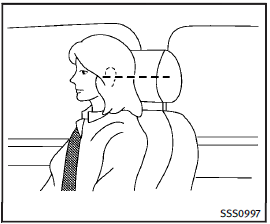
Adjustment
Adjust the head restraint so the center is level with the center of your ears.
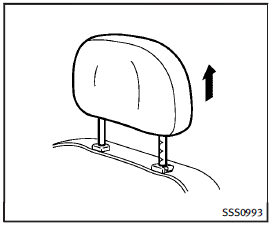
To raise the head restraint, pull it up.
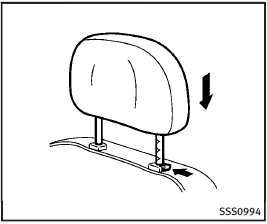
To lower, push and hold the lock knob and push the head restraint down.
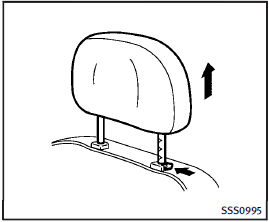
Removal
Use the following procedure to remove the adjustable head restraints.
1. Pull the head restraint up to the highest position.
2. Push and hold the lock knob.
3. Remove the head restraint from the seat.
4. Store the head restraint properly in a secure place so it is not loose in the vehicle.
5. Reinstall and properly adjust the head restraint before an occupant uses the seating position.
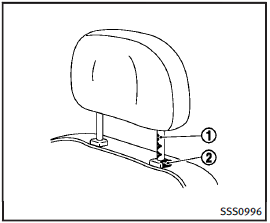
Install
1. Align the head restraint stalks with the holes in the seat. Make sure that the head restraint is facing the correct direction. The stalk with the adjustment notches 1 must be installed in the hole with the lock knob 2 .
2. Push and hold the lock knob and push the head restraint down.
3. Properly adjust the head restraint before an occupant uses the seating position.
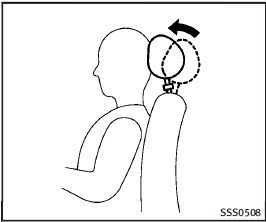
Front-seat Active Head Restraints
The Active Head Restraint moves forward utilizing the force that the seatback receives from the occupant in a rear-end collision. The movement of the head restraint helps support the occupantТs head by reducing its backward movement and helping absorb some of the forces that may lead to whiplash-type injuries.
Active Head Restraints are effective for collisions at low to medium speeds in which it is said that whiplash-type injury occurs most.
Active Head Restraints operate only in certain rear-end collisions. After the collision, the head restraints return to their original positions.
Adjust the Active Head Restraints properly as described earlier in this section.
See also:
iPod * player operation
Connecting iPod
To connect an iPod to the vehicle so that the iPod can be controlled with the audio system controls and display screen, use the USB jack 1 located in the center console. Connect th ...
Warning signals
To help prevent the vehicle from moving
unexpectedly by erroneous operation of
the Intelligent Key listed on the following
chart or to help prevent the vehicle from
being stolen, chime or beep ...
Meters and gauges
1. Tachometer (P.2-8)
2. Warning/Indicator lights (P.2-11)
3. Speedometer (P.2-7)
4. Engine coolant temperature gauge
(P.2-8)
5. Voltmeter (P.2-10)
6. Dot matrix liquid crystal display/ ...
